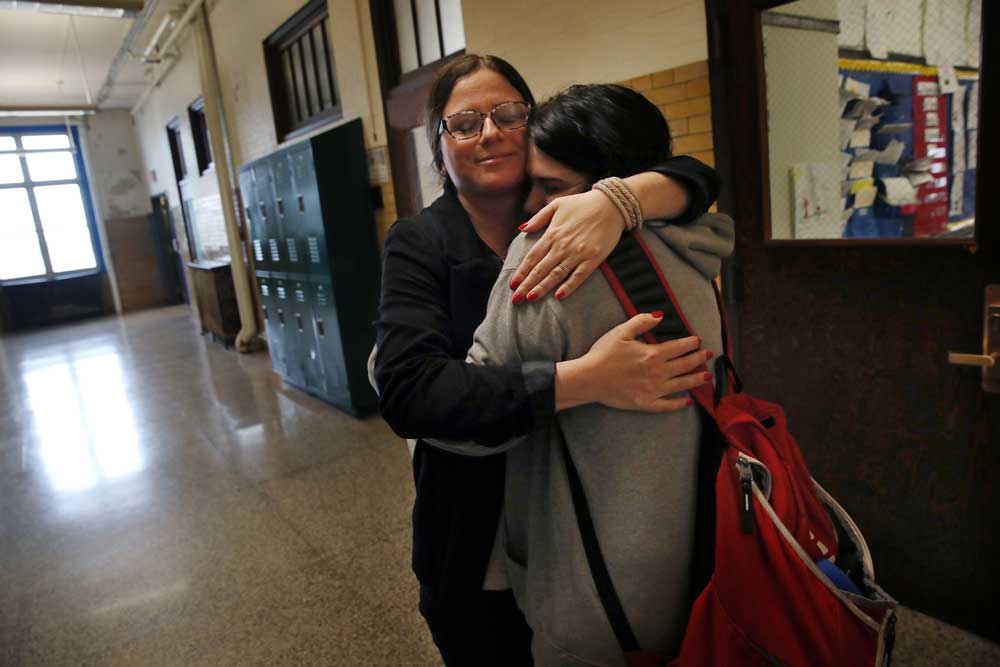
By Amy Briesch and Sandra M. Chafouleas
Whenever a mass shooting takes place in schools, public discussion often focuses on laws or policies that might have prevented the tragedy. But averting school violence needs more than gun policy. It requires both prevention and crisis response that take students’ emotional well-being – not just their physical safety – into account.
School violence prevention also requires professionals – counselors, psychologists and social workers – who know how to create an emotionally safe environment, which research shows is critical to safe schools. Unfortunately, statistics show there is a critical shortage of such employees. Staffing shortages have become a major obstacle to creating schools that are emotionally safe for children.
As school psychology professors who train future school psychologists, we know that school counselors, psychologists and social workers are in short supply. Though school shootings have led to increased hiring of police officers to serve in schools, the hiring of experts in school mental health has not kept pace. Demand is greater than supply, a trend that is projected to continue in the years to come.
Staffing matters
Employment of school counselors is expected to grow 11% over the coming decade. However, there are not enough trained professionals to fill the positions. Current ratios are already twice what they should be, with one school counselor for every 464 students and one school psychologist for every 1,200 students. These ratios are even higher in schools where most students are members of ethnic or racial minorities.
Better-staffed schools are more likely to use preventive and restorative approaches to student violence – ones that aim to educate, rather than those that simply aim to punish. In understaffed schools, providers manage only to keep up with emergencies, rather than doing the preventative work required to make schools safer and more successful.
Key preventive and restorative activities to promote emotionally safe environments include:
- Promoting connected communities: Research has found that when students feel more comfortable at school, and feel like they belong there, they are less likely to engage in aggressive behavior at school – even when they have experienced violence at home. Key activities such as group decision-making, teamwork-building and conflict resolution – often led by teachers with support from school mental health personnel – can help build this type of community.
- Teaching social-emotional skills: School mental health professionals can help to ensure all students are taught strategies to identify their feelings, calm themselves and connect with others. Students with these skills not only have fewer conduct problems and less emotional distress at school but get better grades as well. Most states, however, don’t require schools to teach these skills to all students.
- Intervening early: Schools are in a unique position to provide proactive supports when data suggests widespread need. For example, rates of anxiety and depression in youth have doubled since the onset of the pandemic, such that as many as 20% of students in a classroom may be affected. Targeted therapeutic supports delivered in small group formats by school mental health personnel can help prevent the development of future disorders.
- Providing accessible mental health suppport: Schools can be a primary source for mental health support for young people in crisis. This includes both providing direct services in school and coordinating care with community providers. For many students, especially students of color and those with fewer financial resources, school may be the only accessible way to receive mental health treatment.
Preparing school staff
Even before the COVID-19 pandemic, and much more severely since it began, schools have been struggling to provide enough mental health support to students, given insufficient staffing.
There are several federal bills proposed that aim to expand the number of school mental health workers. One bill would help grow the pipeline by subsidizing the cost of graduate training for those who commit to working in schools. Another would provide grants directly to schools to fund additional in-school positions. However, experts project both bills only have a 3% chance of being enacted by Congress.
![]()
Amy Briesch is Associate Professor of School Psychology at Northeastern University. Sandra M. Chafouleas is Professor of Educational Psychology at the University of Connecticut.





























The Geode says
Mental health this. Mental health that. Blah-blah-(freaking)BLAH! How come nobody considers the HOMES these people come from? What use is mental health help if you are just going to place them in the environment that causes the “mental health crisis” in the first place?